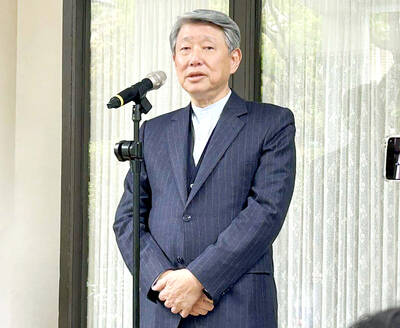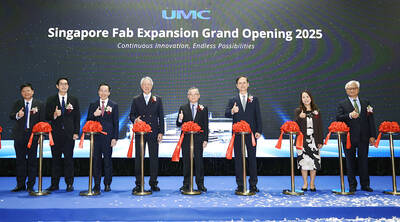The world’s largest iron ore exporter has delivered a mixed message on its outlook, raising near-term price forecasts, but combining that revision with a more somber message that China’s gargantuan imports are set to level off as steel production eases in the coming years.
Iron ore would average US$61.80 a tonne this year and US$51.10 in 2019, the Australian Department of Industry, Innovation and Science said in a quarterly report yesterday.
That compares with forecasts of US$52.60 and US$48.80 in the department’s previous outlook.
Prices are “expected to moderate, to better reflect the fundamentals of growing low-cost supply from Brazil and moderating demand in China,” the department said, predicting rising global volumes this year as well as next, driven by new mines, including Vale SA’s giant S11D project in Brazil.
Steel production in China would drop each year through to 2023, while iron ore shipments from Australia and Brazil would rise before leveling off, it forecast.
Iron ore received a battering last month, collapsing into a bear market as investors fretted about weaker-than-expected springtime demand in top user China, record holdings accumulated in its ports, and jitters about global growth as the US and China swapped barbs on trade.
Barclays PLC is among banks that have flagged the risk of a further weakening of prices this quarter, highlighting the potential for a switch away from higher-content ores, which have seen strong demand as Beijing acts to battle pollution.
“Iron ore import demand is expected to be weighed down by declining steel production in China,” the department said. “The main drivers of declining steel production are slowing construction activity and infrastructure investment, and increasingly stringent environmental regulations.”
The spot price for iron ore with 62 percent content in northern China was at US$63.35 a dry tonne on Wednesday last week, according to Mysteel.com.
That compared with US$73.50 at the end of last year and this year’s peak of almost US$80 in late February.
So far this year, the raw material has averaged about US$73 a tonne.
Among the department’s forecasts, China’s iron ore imports are forecast to ease from 1.08 billion tonnes this year to 1.04 billion in 2023.
At the same time, nationwide steel output would fall from 832 million tonnes this year to 805 million in 2023, while local steel usage would contract from 772 million tonnes to 742 million.

MULTIFACETED: A task force has analyzed possible scenarios and created responses to assist domestic industries in dealing with US tariffs, the economics minister said The Executive Yuan is tomorrow to announce countermeasures to US President Donald Trump’s planned reciprocal tariffs, although the details of the plan would not be made public until Monday next week, Minister of Economic Affairs J.W. Kuo (郭智輝) said yesterday. The Cabinet established an economic and trade task force in November last year to deal with US trade and tariff related issues, Kuo told reporters outside the legislature in Taipei. The task force has been analyzing and evaluating all kinds of scenarios to identify suitable responses and determine how best to assist domestic industries in managing the effects of Trump’s tariffs, he

TIGHT-LIPPED: UMC said it had no merger plans at the moment, after Nikkei Asia reported that the firm and GlobalFoundries were considering restarting merger talks United Microelectronics Corp (UMC, 聯電), the world’s No. 4 contract chipmaker, yesterday launched a new US$5 billion 12-inch chip factory in Singapore as part of its latest effort to diversify its manufacturing footprint amid growing geopolitical risks. The new factory, adjacent to UMC’s existing Singapore fab in the Pasir Res Wafer Fab Park, is scheduled to enter volume production next year, utilizing mature 22-nanometer and 28-nanometer process technologies, UMC said in a statement. The company plans to invest US$5 billion during the first phase of the new fab, which would have an installed capacity of 30,000 12-inch wafers per month, it said. The

Taiwan’s official purchasing managers’ index (PMI) last month rose 0.2 percentage points to 54.2, in a second consecutive month of expansion, thanks to front-loading demand intended to avoid potential US tariff hikes, the Chung-Hua Institution for Economic Research (CIER, 中華經濟研究院) said yesterday. While short-term demand appeared robust, uncertainties rose due to US President Donald Trump’s unpredictable trade policy, CIER president Lien Hsien-ming (連賢明) told a news conference in Taipei. Taiwan’s economy this year would be characterized by high-level fluctuations and the volatility would be wilder than most expect, Lien said Demand for electronics, particularly semiconductors, continues to benefit from US technology giants’ effort

‘SWASTICAR’: Tesla CEO Elon Musk’s close association with Donald Trump has prompted opponents to brand him a ‘Nazi’ and resulted in a dramatic drop in sales Demonstrators descended on Tesla Inc dealerships across the US, and in Europe and Canada on Saturday to protest company chief Elon Musk, who has amassed extraordinary power as a top adviser to US President Donald Trump. Waving signs with messages such as “Musk is stealing our money” and “Reclaim our country,” the protests largely took place peacefully following fiery episodes of vandalism on Tesla vehicles, dealerships and other facilities in recent weeks that US officials have denounced as terrorism. Hundreds rallied on Saturday outside the Tesla dealership in Manhattan. Some blasted Musk, the world’s richest man, while others demanded the shuttering of his